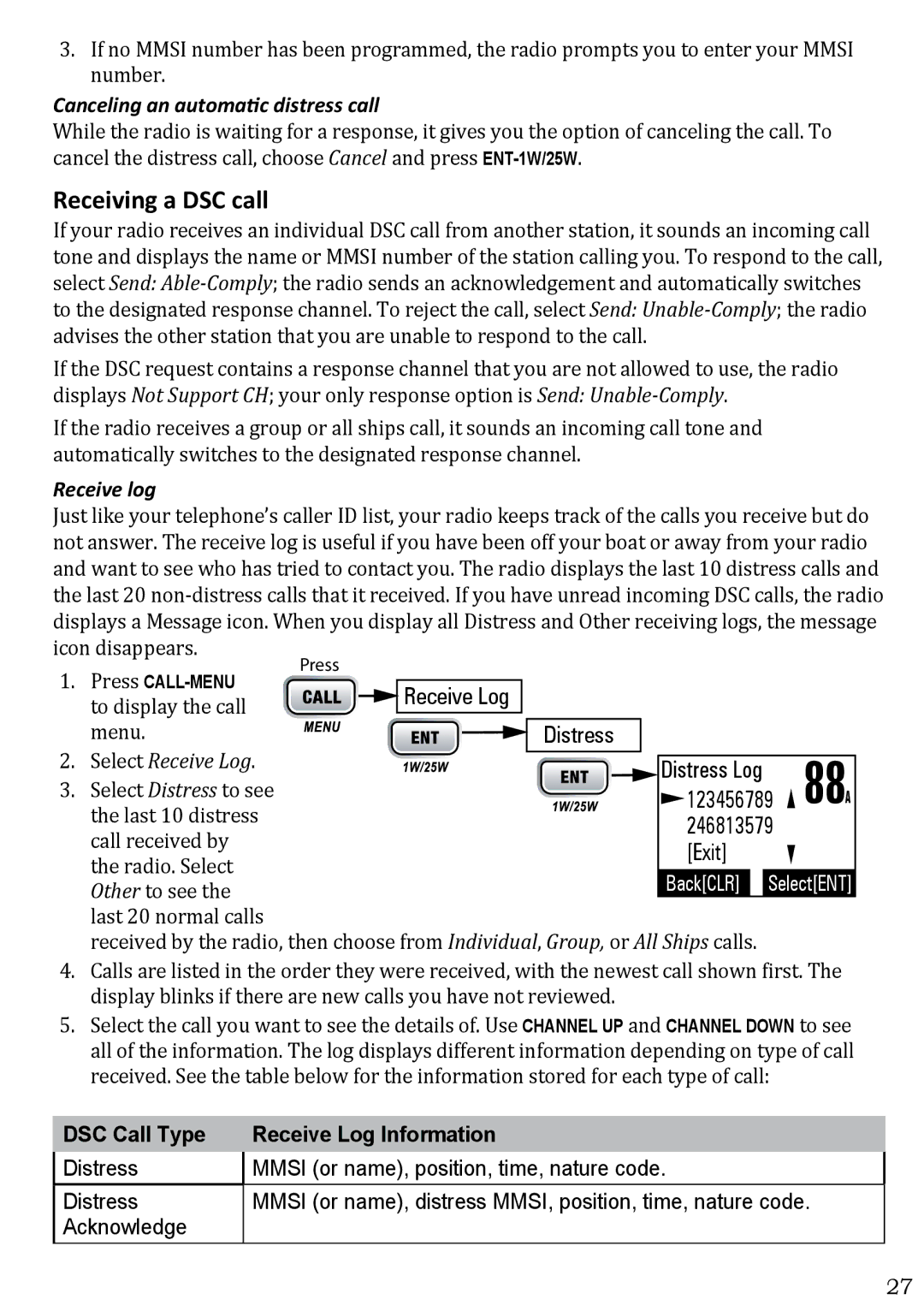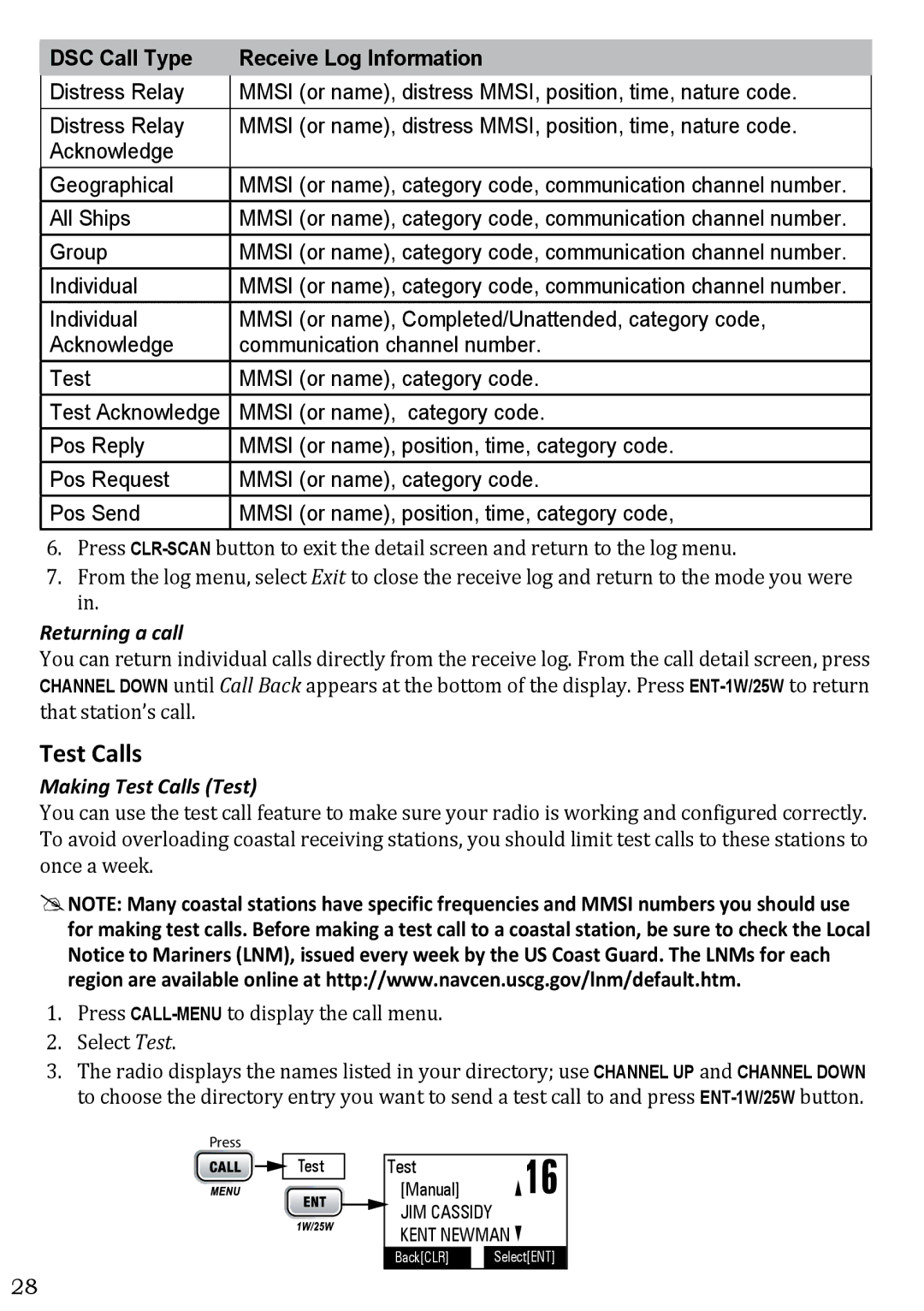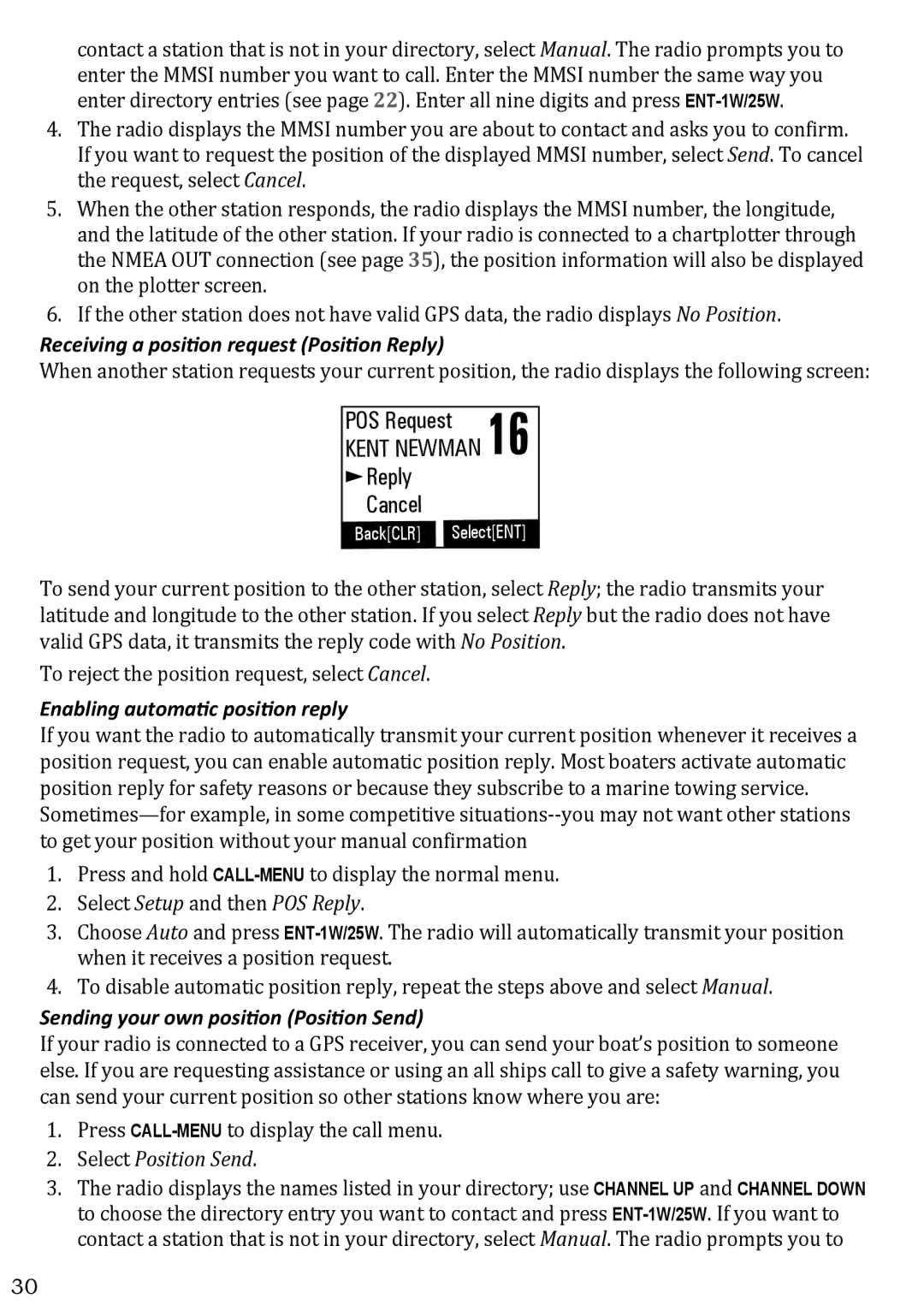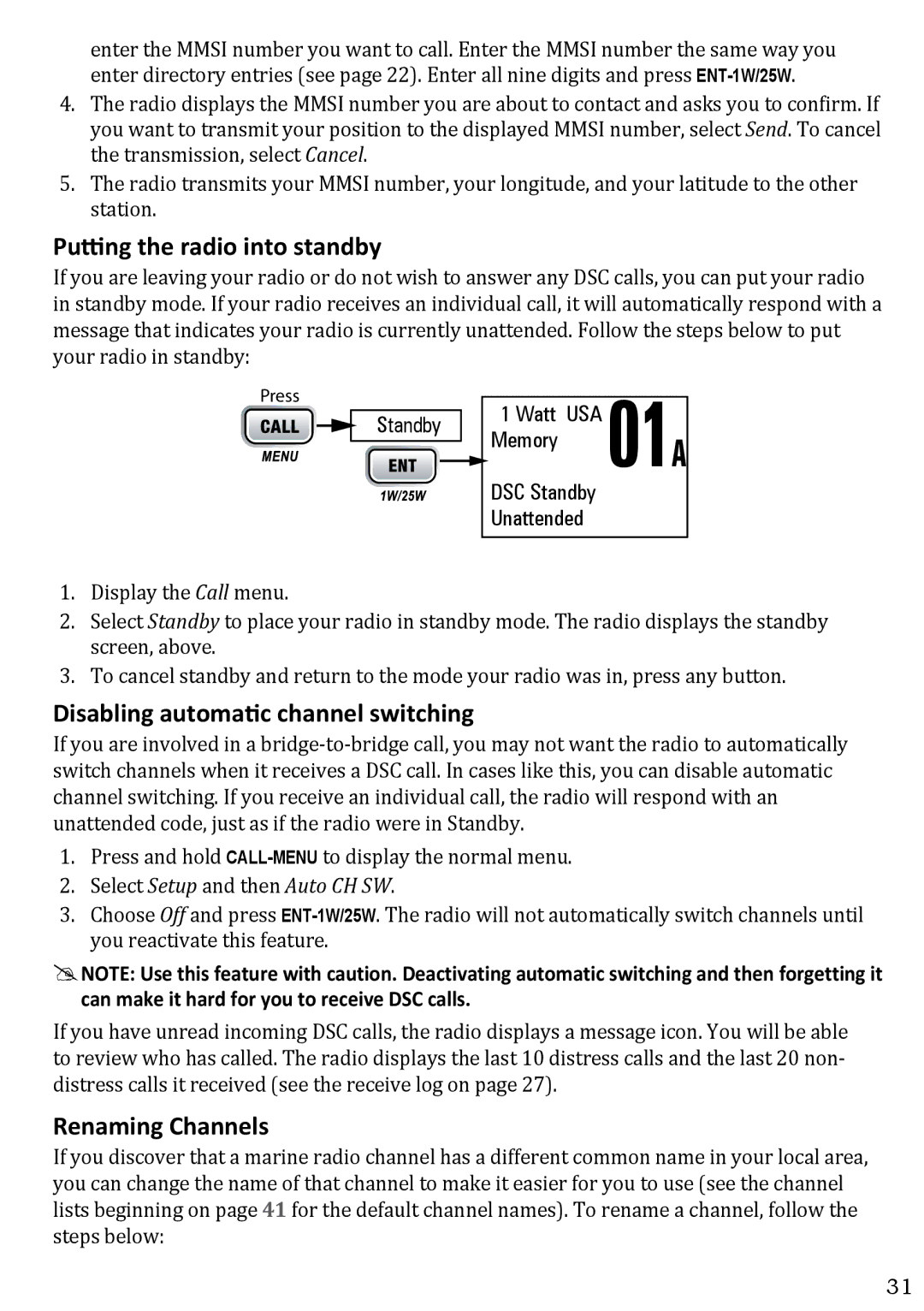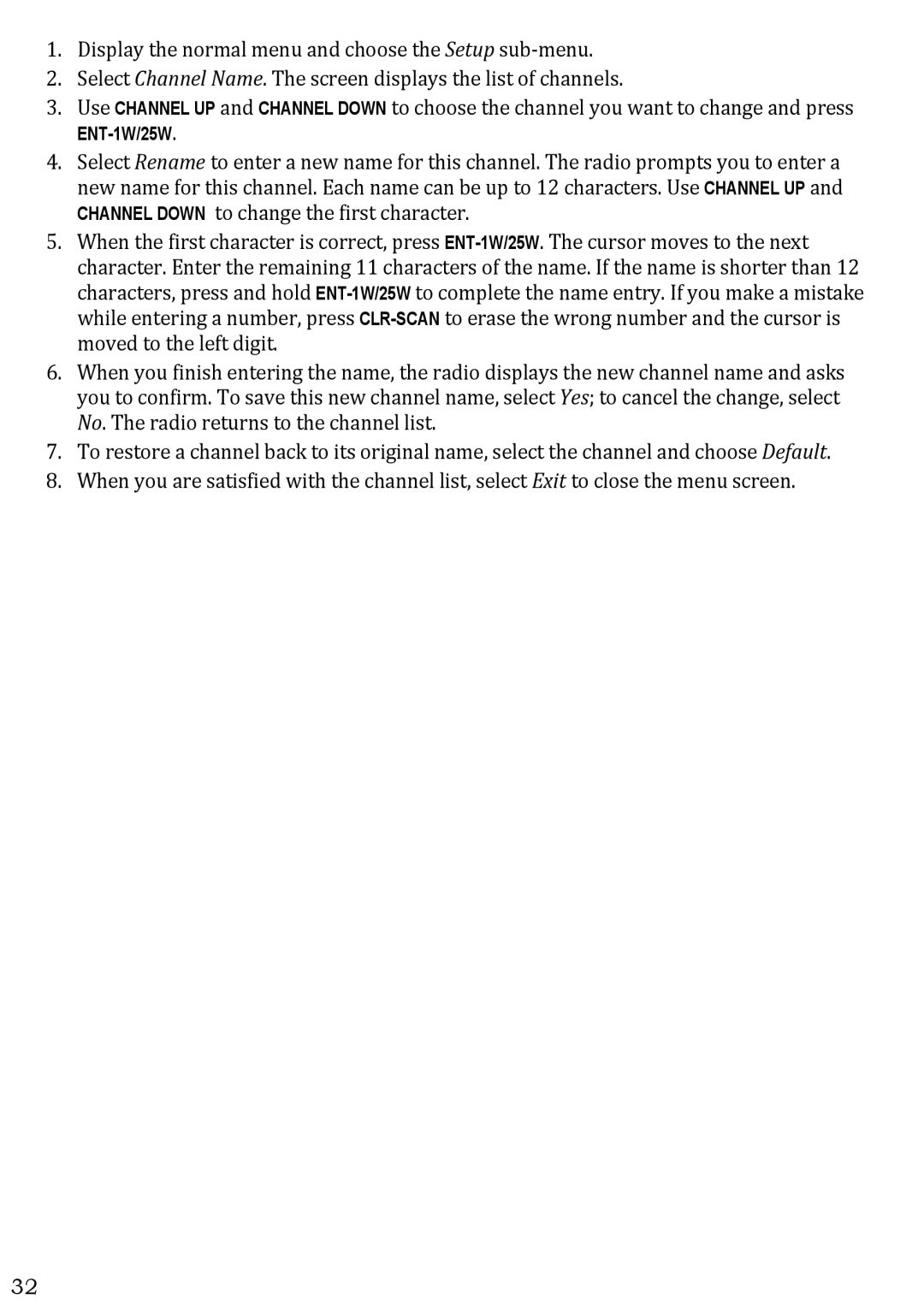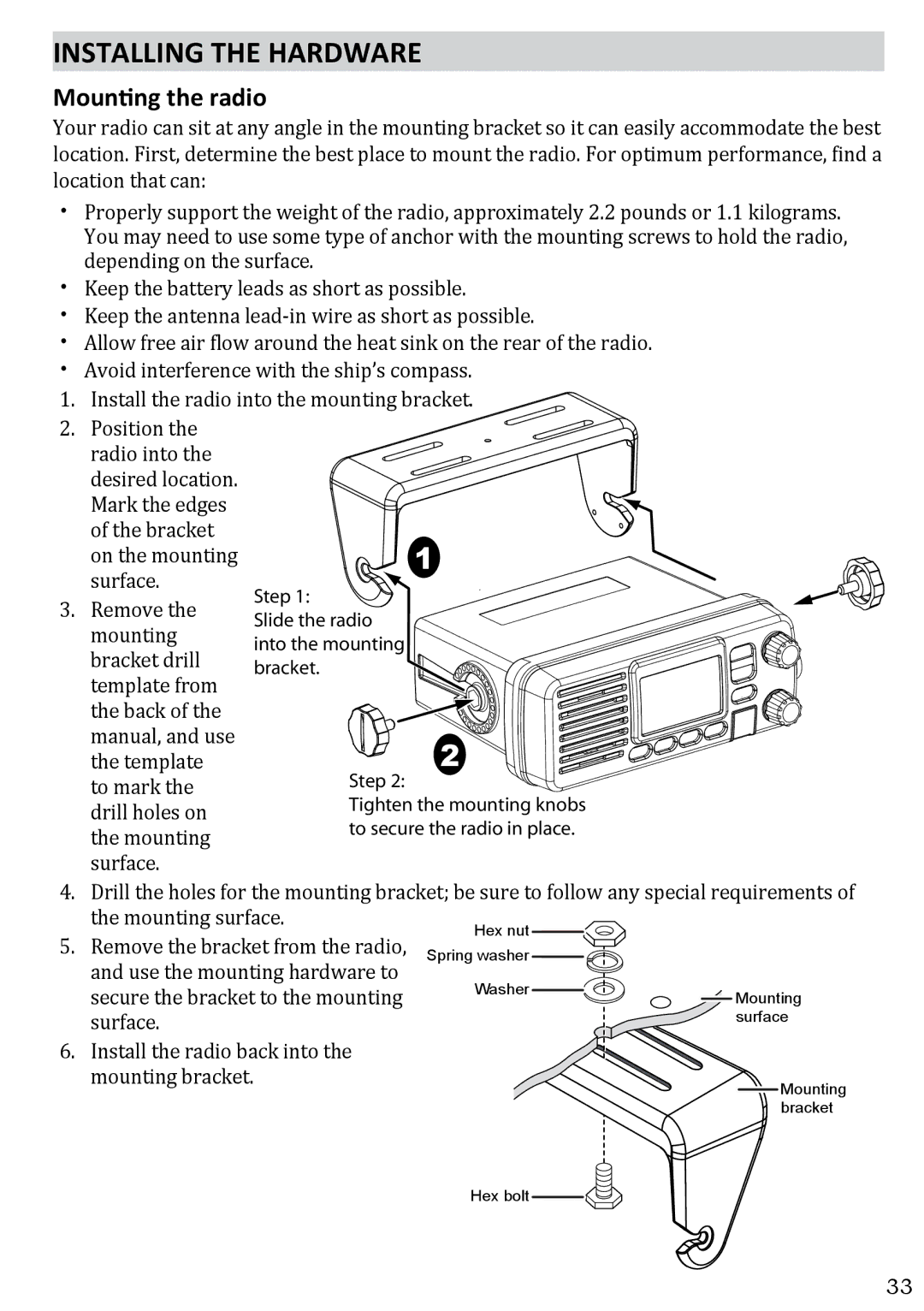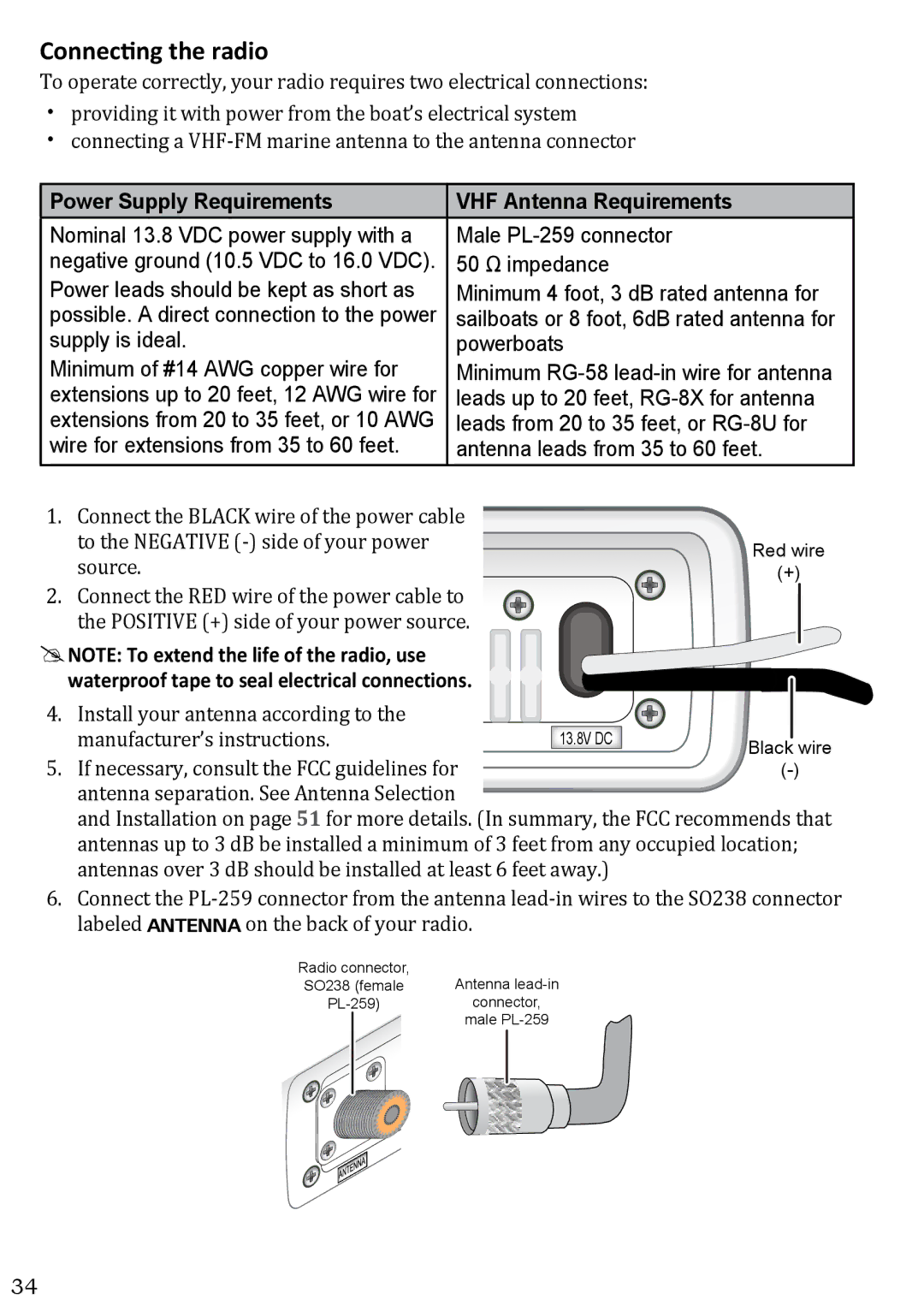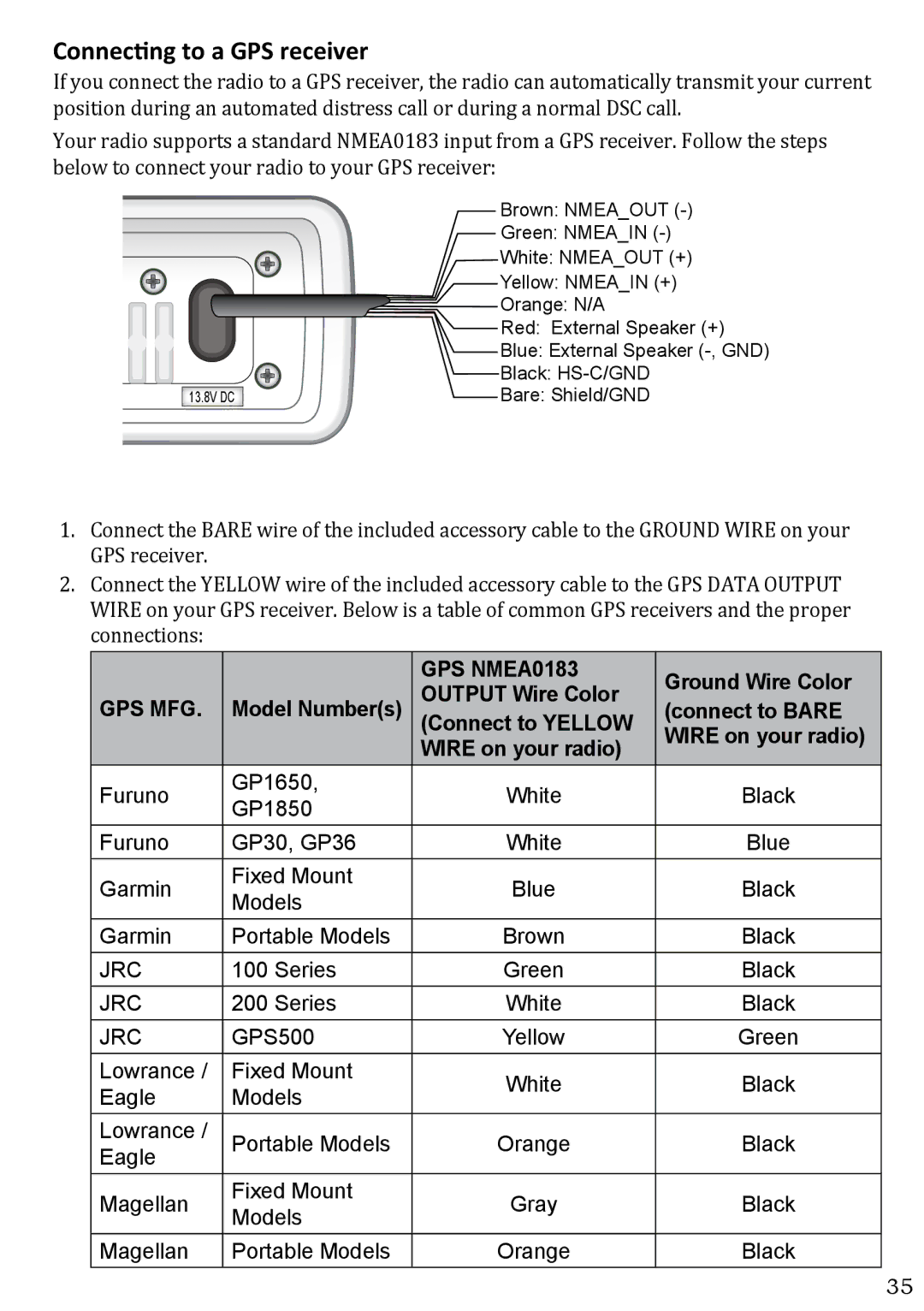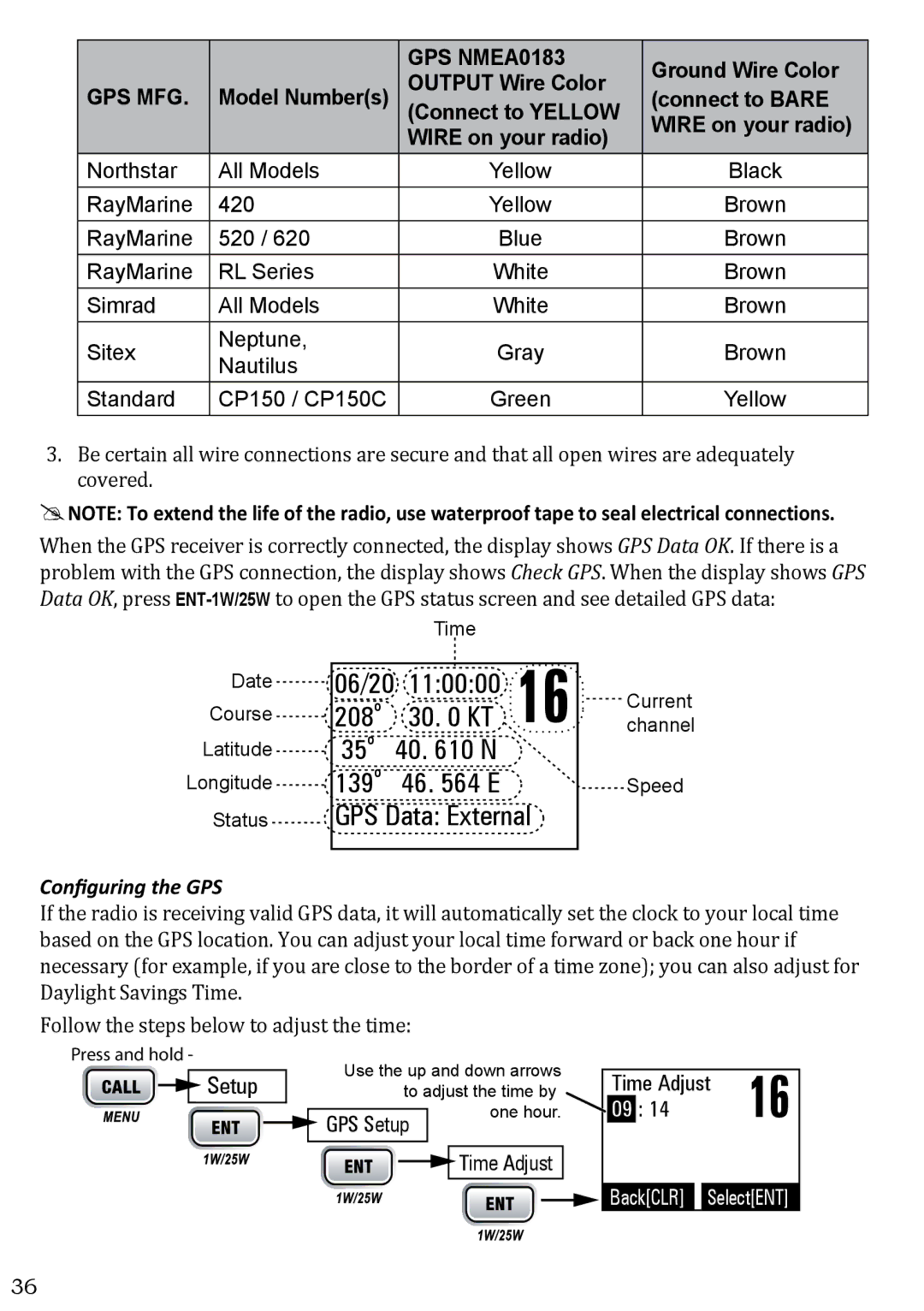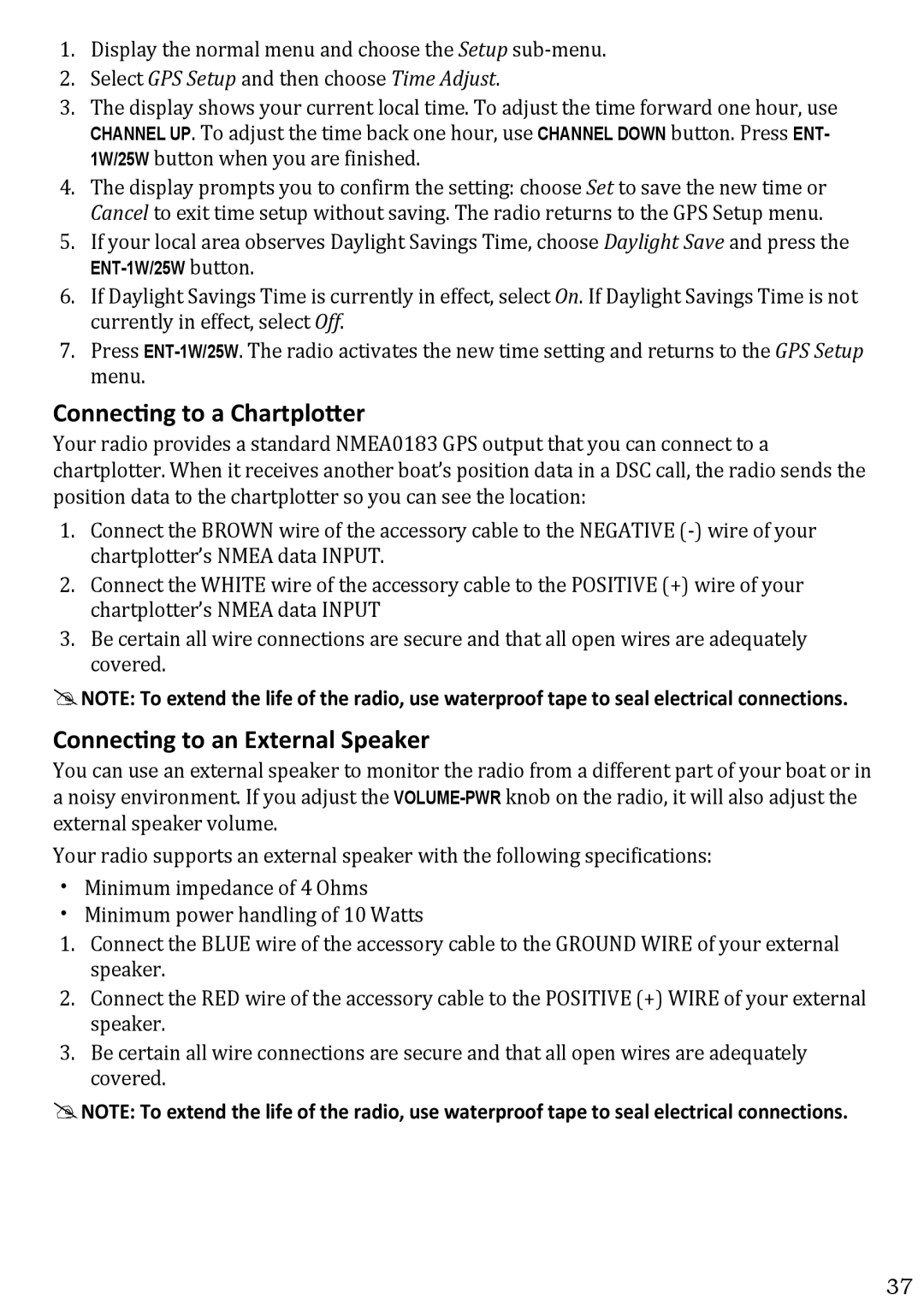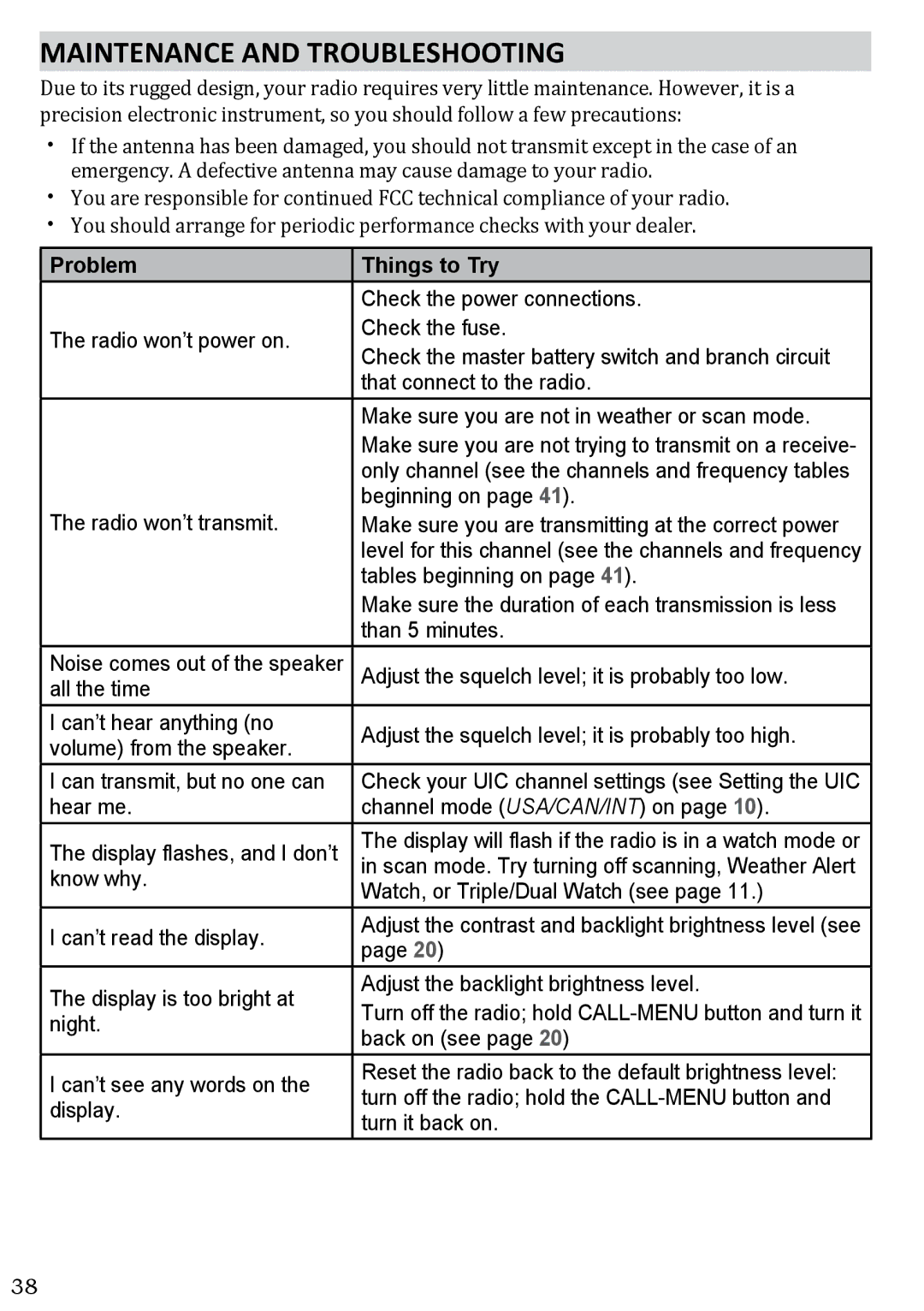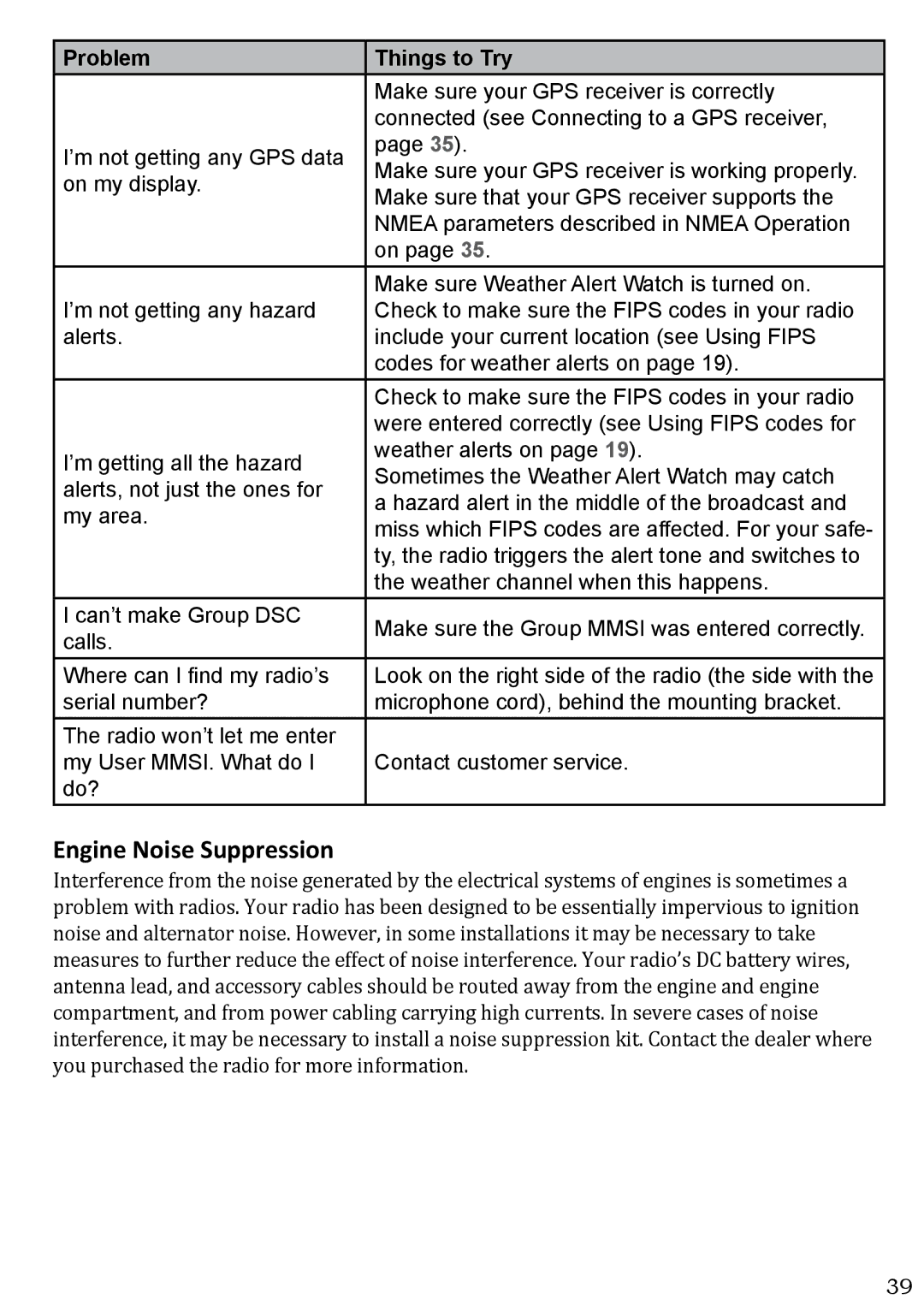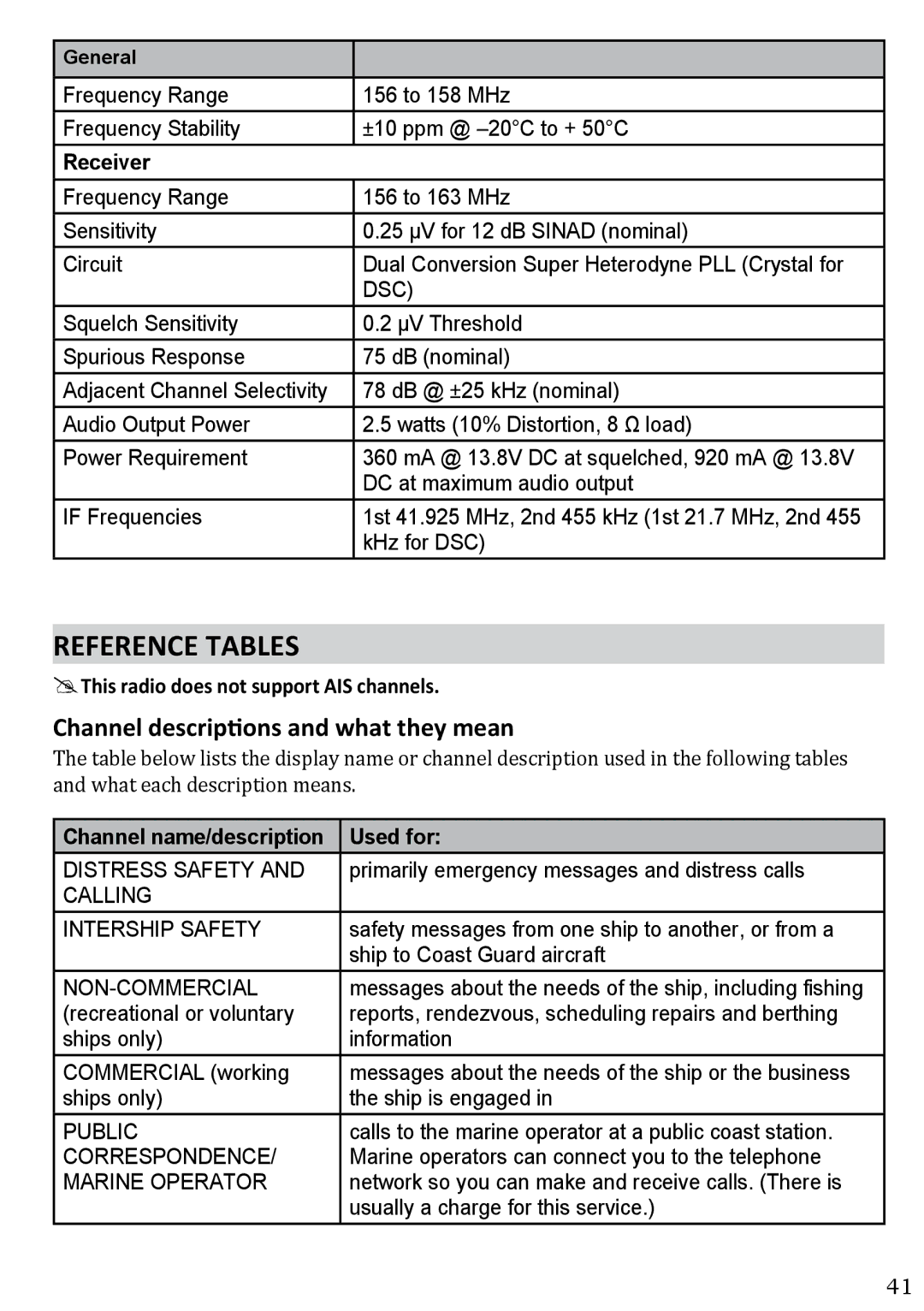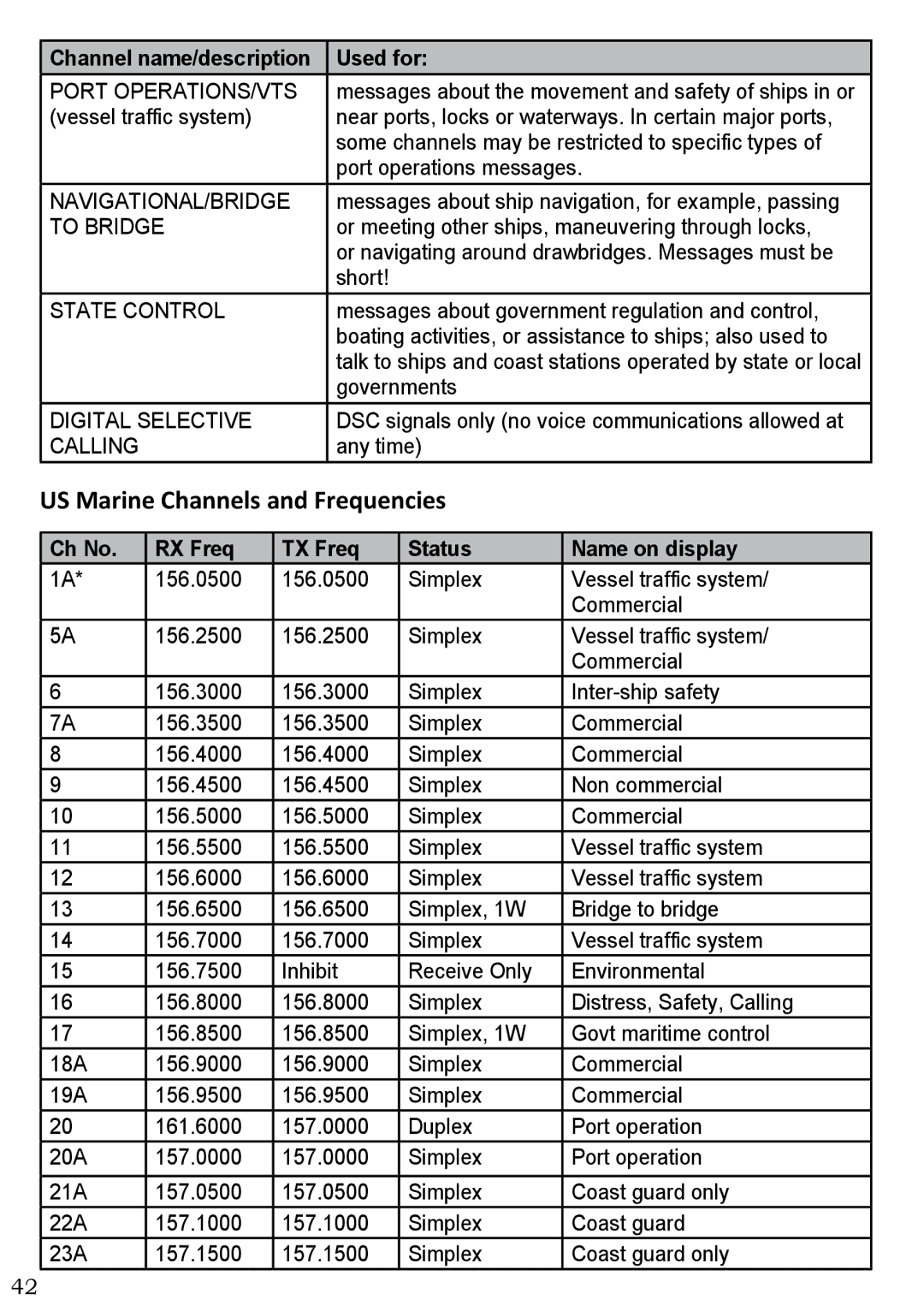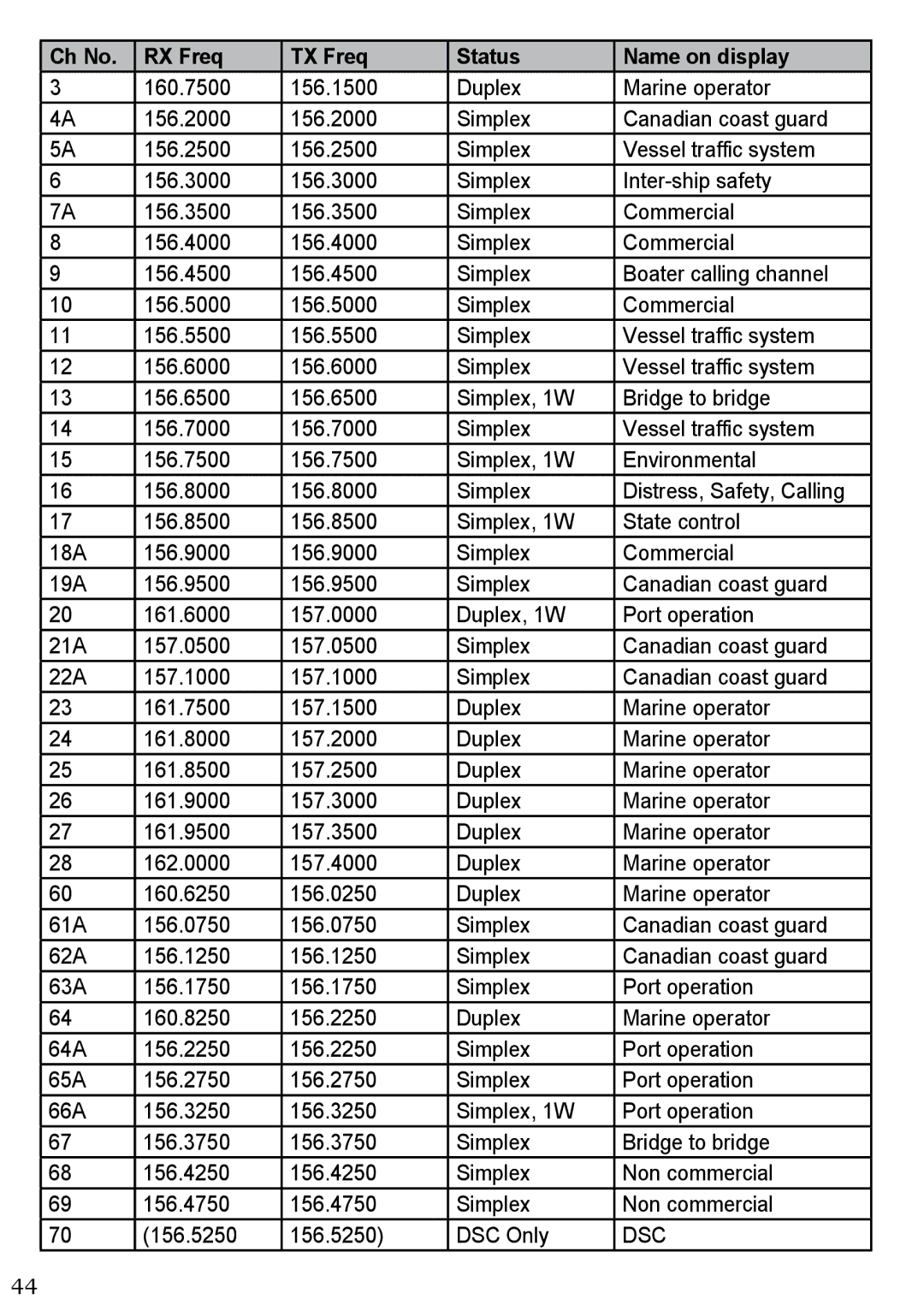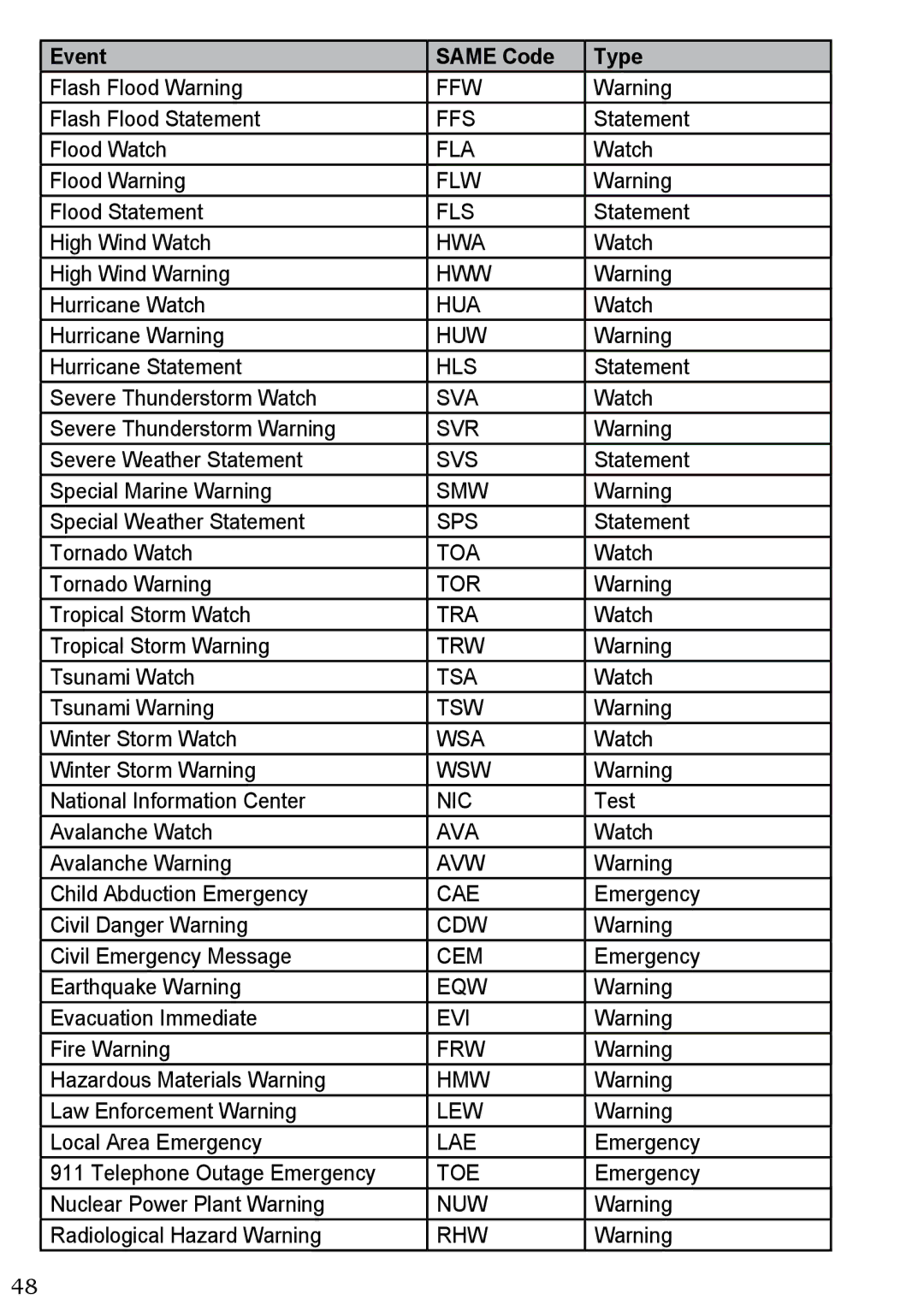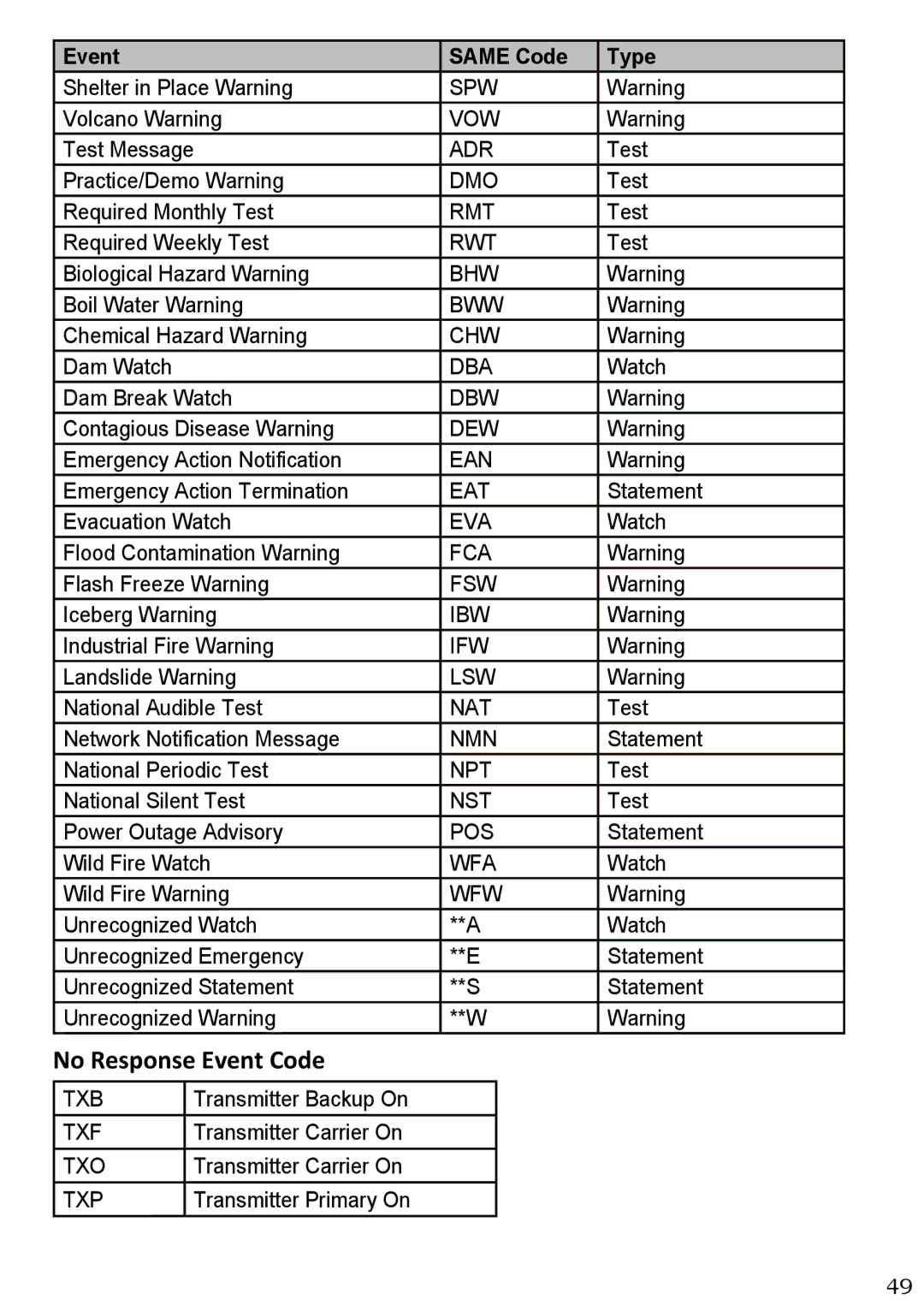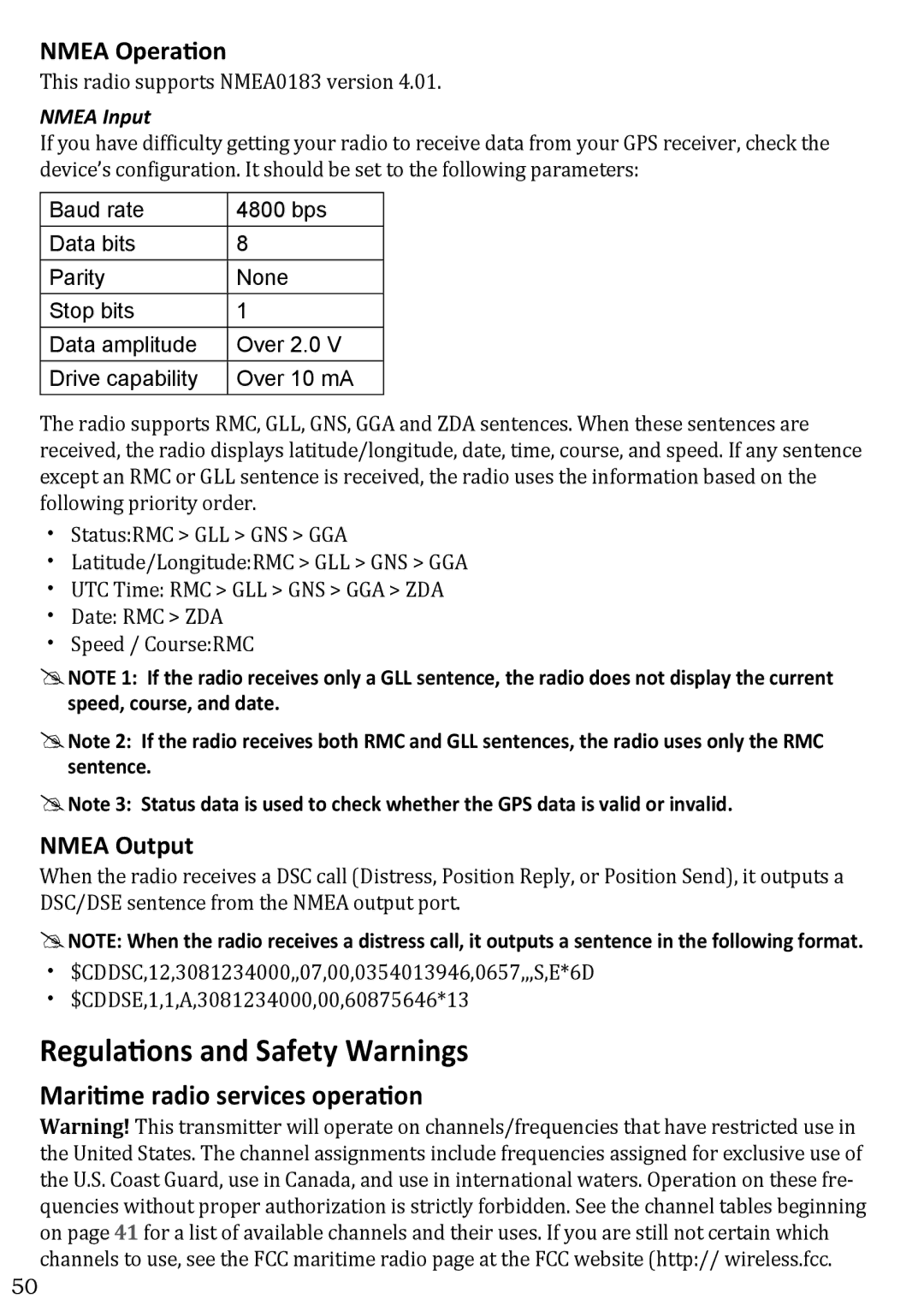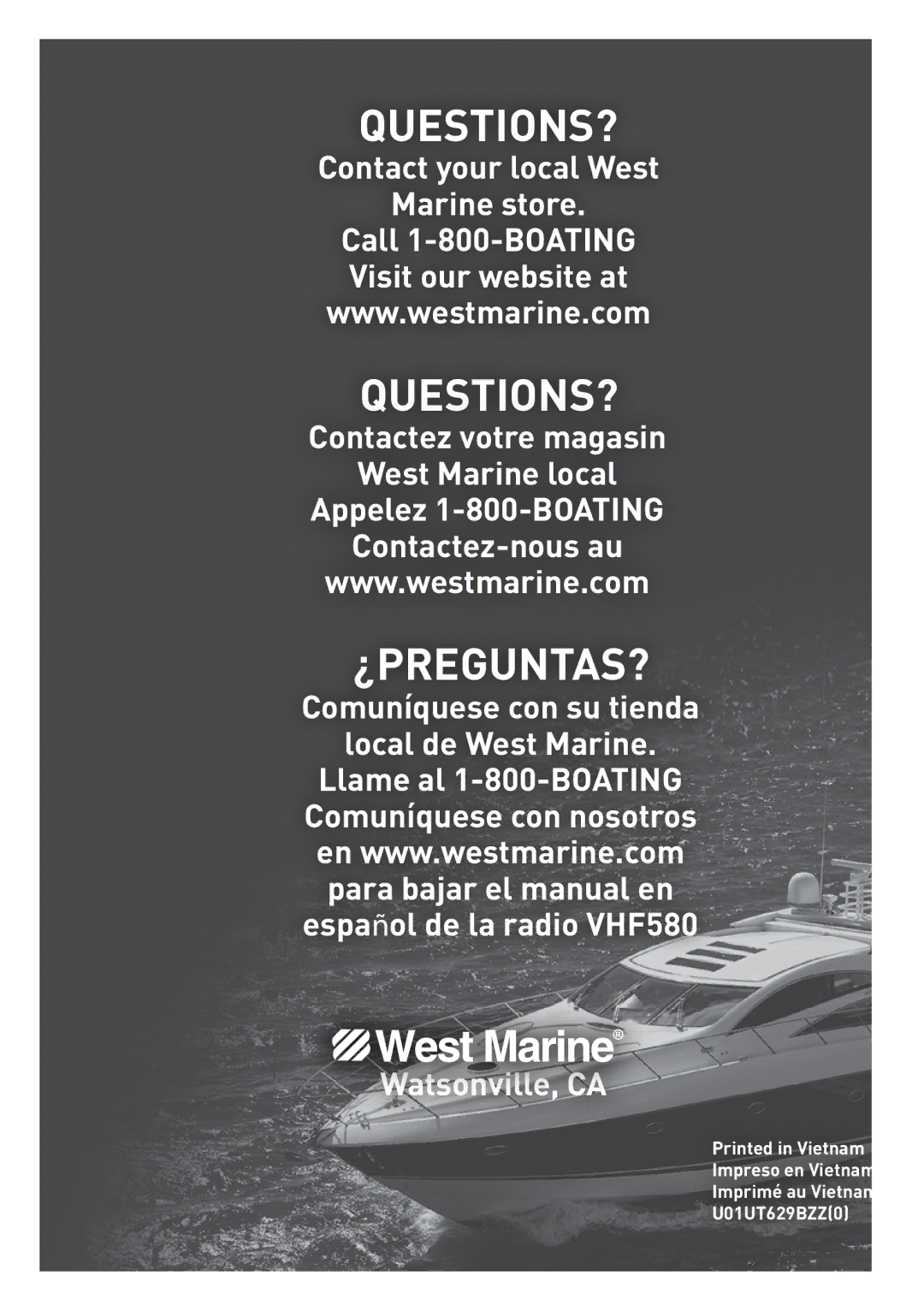Problem | Things to Try | |
| Make sure your GPS receiver is correctly | |
| connected (see Connecting to a GPS receiver, | |
I’m not getting any GPS data | page 35). | |
Make sure your GPS receiver is working properly. | ||
on my display. | ||
Make sure that your GPS receiver supports the | ||
| ||
| NMEA parameters described in NMEA Operation | |
| on page 35. | |
| Make sure Weather Alert Watch is turned on. | |
I’m not getting any hazard | Check to make sure the FIPS codes in your radio | |
alerts. | include your current location (see Using FIPS | |
| codes for weather alerts on page 19). | |
| Check to make sure the FIPS codes in your radio | |
| were entered correctly (see Using FIPS codes for | |
I’m getting all the hazard | weather alerts on page 19). | |
Sometimes the Weather Alert Watch may catch | ||
alerts, not just the ones for | ||
a hazard alert in the middle of the broadcast and | ||
my area. | ||
miss which FIPS codes are affected. For your safe- | ||
| ||
| ty, the radio triggers the alert tone and switches to | |
| the weather channel when this happens. | |
I can’t make Group DSC | Make sure the Group MMSI was entered correctly. | |
calls. | ||
| ||
Where can I find my radio’s | Look on the right side of the radio (the side with the | |
serial number? | microphone cord), behind the mounting bracket. | |
The radio won’t let me enter |
| |
my User MMSI. What do I | Contact customer service. | |
do? |
|
Engine Noise Suppression
Interference from the noise generated by the electrical systems of engines is sometimes a problem with radios. Your radio has been designed to be essentially impervious to ignition noise and alternator noise. However, in some installations it may be necessary to take measures to further reduce the effect of noise interference. Your radio’s DC battery wires, antenna lead, and accessory cables should be routed away from the engine and engine compartment, and from power cabling carrying high currents. In severe cases of noise interference, it may be necessary to install a noise suppression kit. Contact the dealer where you purchased the radio for more information.
39
